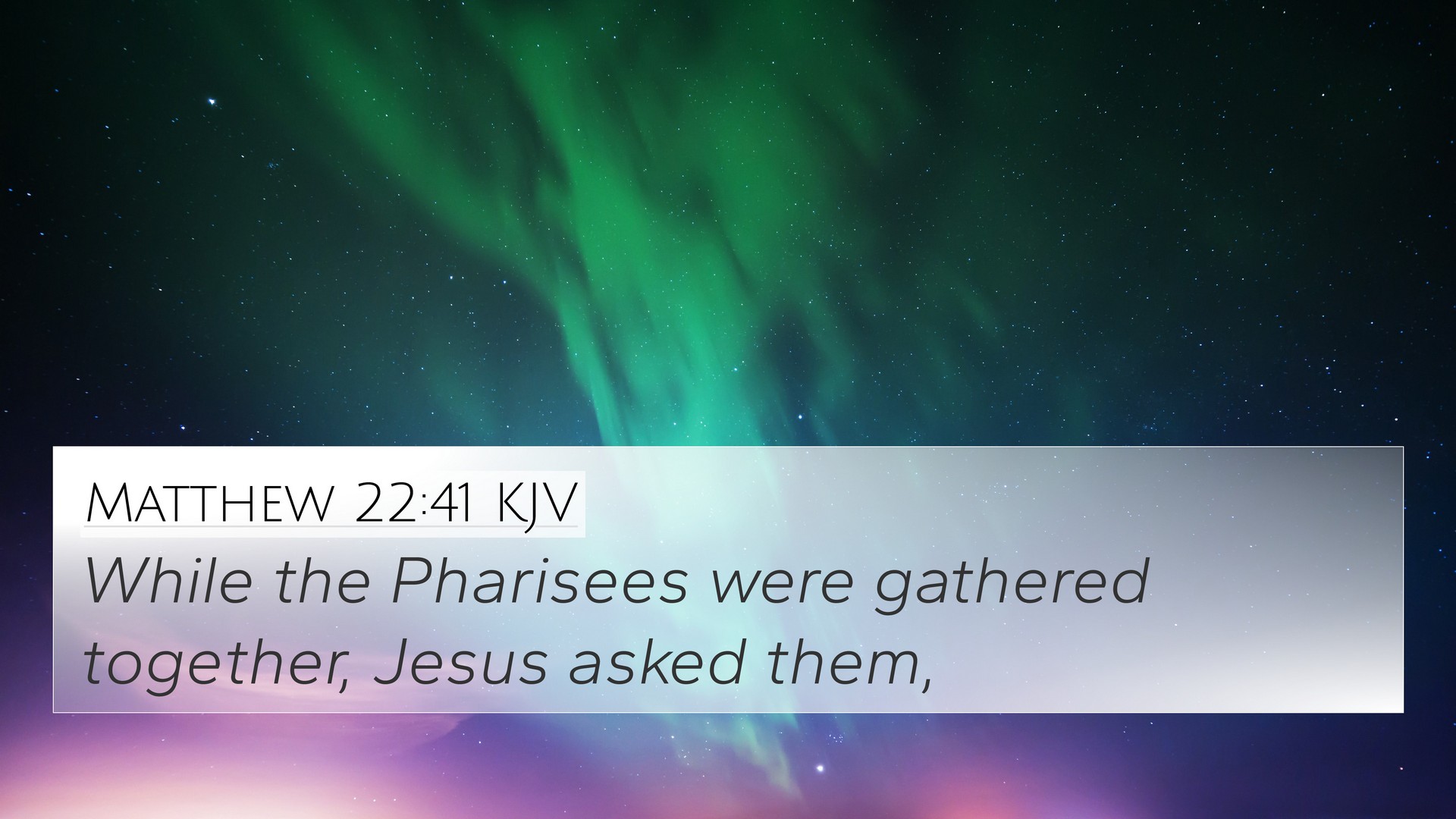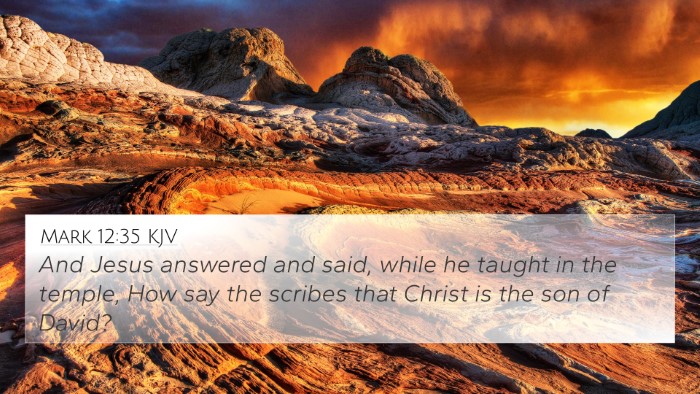Insight and Interpretation of Matthew 22:41
Matthew 22:41 states: "While the Pharisees were gathered together, Jesus asked them." This verse acts as a significant transition where Jesus engages with the Pharisees, inviting them to contemplate an important truth regarding the Messiah.
Contextual Overview
This passage occurs after Jesus has been challenged by various groups, including the Sadducees and Pharisees, who sought to trap Him with their questions. Matthew Henry highlights that Jesus uses this opportunity to turn the conversation, demonstrating His authority and understanding of the Scriptures.
Key Themes
-
The Authority of Christ: Jesus poses a question that reveals His divine authority and deep understanding of the Scriptures, compelling the Pharisees to reconsider their views on the Messiah.
-
Dialogue with Opponents: The interaction signifies Jesus' willingness to engage with those who oppose Him, showcasing His method of teaching through inquiry and dialogue, as explained by Adam Clarke.
-
Revelation of Truth: By asking, "What think ye of Christ?" Jesus directs the attention of the Pharisees to the true nature of the Messiah, emphasizing that understanding Him is key to salvation.
Cross References
This verse connects with several other scriptures, revealing inter-Biblical dialogues about the identity and role of the Messiah:
- Psalm 110:1 - "The Lord said unto my Lord, Sit thou at my right hand..." This verse is crucial in understanding Jesus’ divine nature and lordship.
- Isaiah 9:6 - "For unto us a child is born, unto us a son is given..." This prophecy details the Messiah's identity and attributes.
- Matthew 1:1 - "The book of the generation of Jesus Christ..." This genealogy shows Jesus as the fulfillment of Old Testament prophecies.
- Acts 2:34-36 - "For David is not ascended into the heavens..." Peter declares Jesus as Lord and Christ.
- John 1:41 - "He first findeth his own brother Simon, and saith unto him, We have found the Messias..." Linking Jesus’ identity directly back to the Old Testament expectation.
- Luke 20:41-44 - A parallel account where Jesus similarly questions goodness regarding the Messiah's lineage.
- Romans 1:3-4 - "Concerning his Son Jesus Christ our Lord, which was made of the seed of David..." A clear link between the lineage of Christ and His divine nature.
- Hebrews 1:13 - "But to which of the angels said he at any time, Thou art my Son..." Jesus’ various roles and identities as affirmed in the New Testament.
- Revelation 22:16 - "I Jesus have sent mine angel to testify unto you these things..." Highlighting His authority over the church and fulfillment of prophecy.
- John 7:27 - "Howbeit we know this man whence he is: but when Christ cometh, no man knoweth whence he is." This underscores the confusion about the Messiah's origin and identity.
Conclusion
Matthew 22:41 serves as a pivotal moment where Jesus seeks to enlighten the Pharisees about His identity as the Messiah. By cross-referencing this verse with other relevant scriptures, one can explore the rich connections woven throughout the Word of God. These thematic links exemplify the intricacies of scriptural cross-referencing, enhancing our understanding of divine truth and the nature of Christ.
Tools for Bible Cross-Referencing
To delve deeper into cross-referencing Bible verses, several tools and resources can enhance your study:
- Bible concordance: A comprehensive guide to finding specific words or themes across scripture.
- Bible cross-reference guide: References and insights for linking passages together.
- Cross-reference Bible study tools: Systems designed to visualize connections between verses.
- Bible chain references: A method of following a theme through a sequence of verses.
- Comprehensive Bible cross-reference materials: In-depth guides that facilitate deeper understanding.






